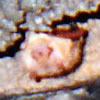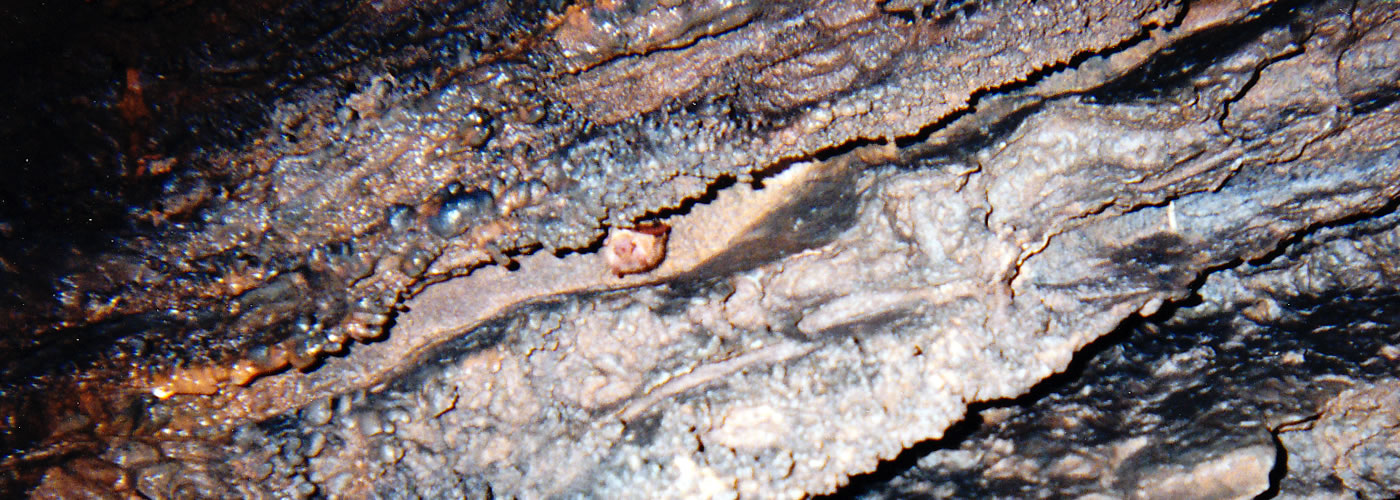I've only seen bats and some bugs at the entrance to caves.
If you see a bat in a cave, do not bother it!
Bat's have a hard time finding food in the winter. They really need to conserve their energy. If you wake them up, they may not have enough fat to last through the winter and they may die.
You could make a bat sick by touching it. Or a bat could make you sick.
There are actually a lot of things that live in caves.
Some spend their entire life underground, in the dark. They are often white, completely lacking any pigment, and blind.
 Other animals only live in caves sometimes.
Other animals only live in caves sometimes.
Scientists categorize cave animals by how much time they spend in the cave and how adapted they are to live in a cave. Caves aren't just dark. They also have high humidity and a temperature that does not change much. There is a limited food supply and sometimes limited oxygen.
There are two prefixes. Troglo means land. Stygo means water.
Trogloxenes and Stygoxenes: Like caves, but don't really live there.
They might shelter in caves, but they spend most of their lives above ground.
Bats are trogloxenes. They sleep in a cave, but they leave to find food.
Examples of Trogloxenes: bats, Daddy-Long-Legs, crickets, bears, foxes, rats, snakes, raccoons, moths, swallows, vultures, and groundhogs.
Examples of Stygoxenes: fish, crayfish and freshwater mussels.
Troglophiles and Stygophiles: Could live completely underground, but they don't have to.
They might live in caves, but they could live above ground perfectly well.
Examples of Troglophiles: beetles, some crayfish, earthworms with pigment, millipedes and centipedes.
Examples of Stygophiles: some amphipods, springfish and some salamanders.

People thought they were baby dragons.
It is the largest troglodytic amphibian in the world.
See more Postojna Cave, Slovenia >
Troglobites and Stygobites: Live completely underground. They only live in caves. They often have adapted for the darkness. They may have little or no pigment and they may be blind. They often have a very low metabolism.
Examples of Troglobites: snails, worms, cave millipedes, centipedes, some beetles and spiders.
Examples of Stygobites: There are 170 species of cavefish, like catfish, carps, pupfish, gobies and eels, blind cave salamanders and cave shrimp.
A very low metabolism may result in cave animals living longer. According to the National Geographic article; "Discoveries in the dark" the crayfish Orconectes australis of Shelta Cave in Alabama can reproduce at 100 and live to 175.
You can learn more and see photos in GUIDE TO MISSOURI'S CAVE LIFE: 70 Cave Species Brought to Light by William R. Elliott (PDF)
There are some 70 photos in this guide.
